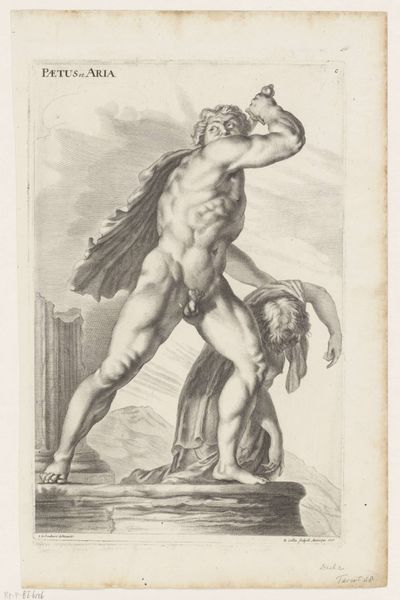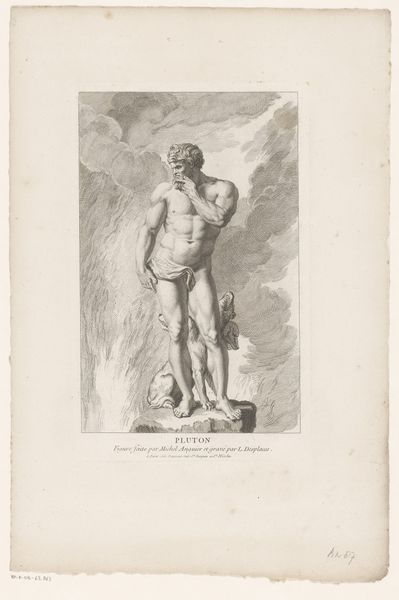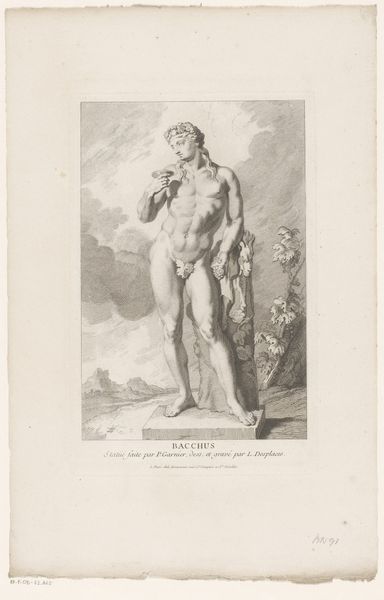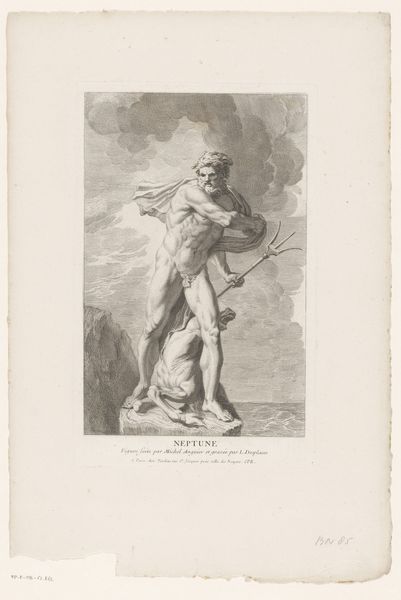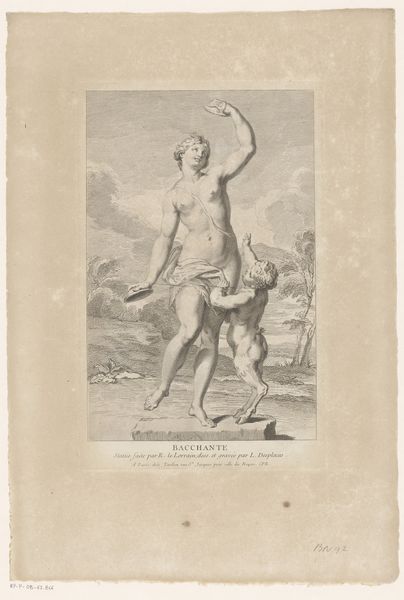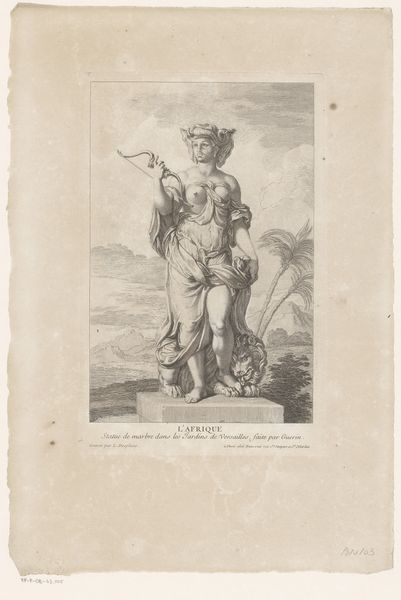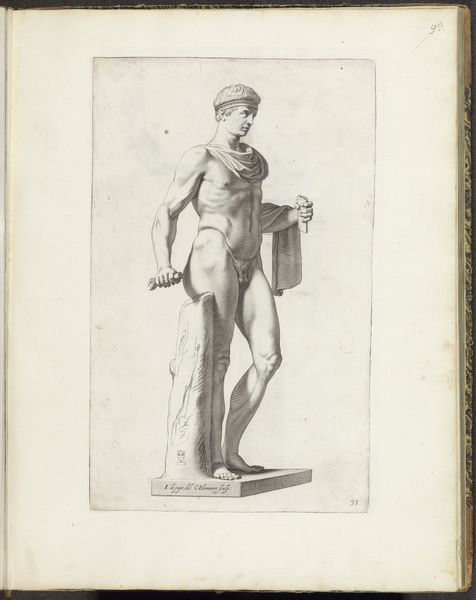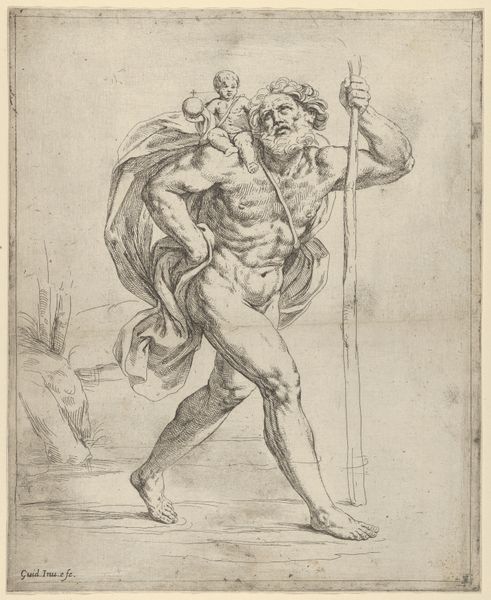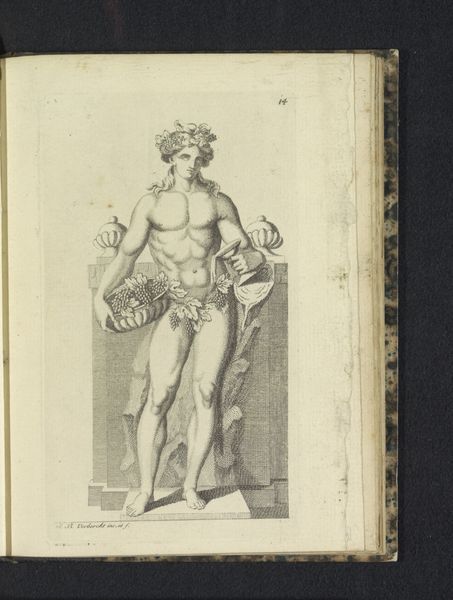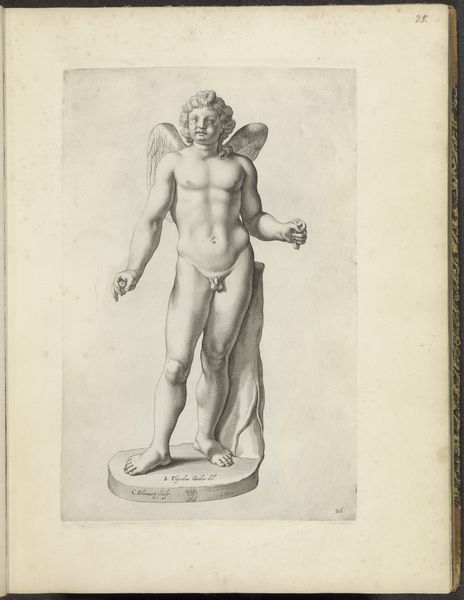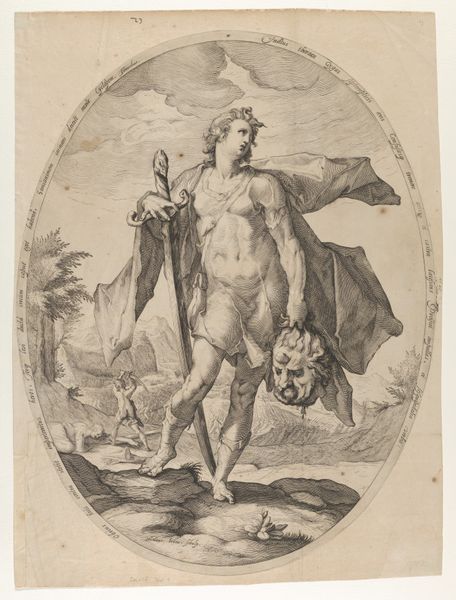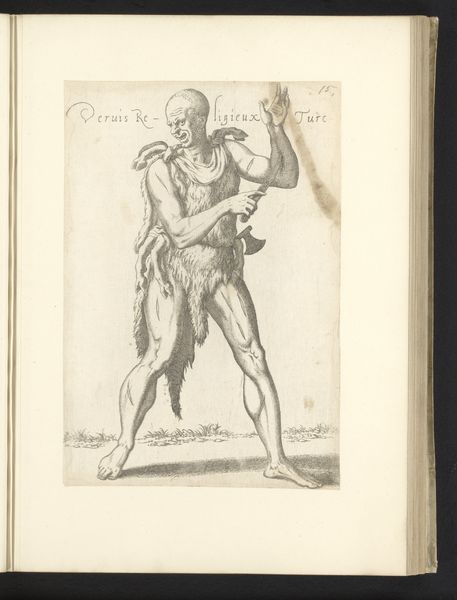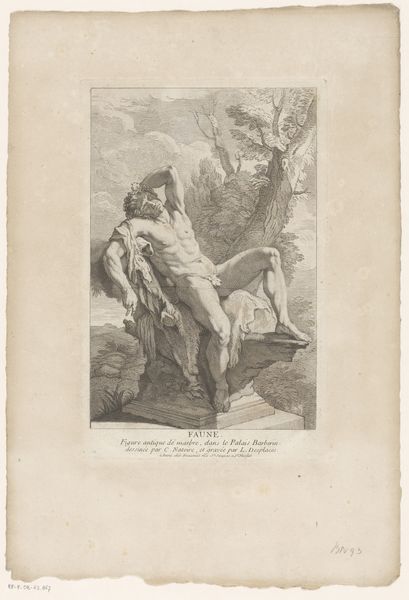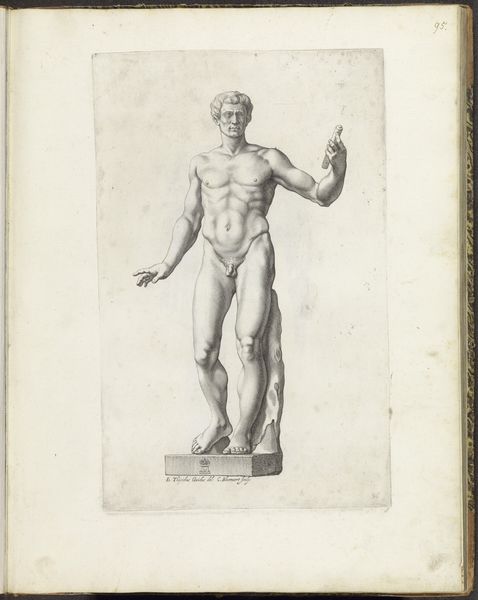
print, engraving
#
allegory
#
baroque
# print
#
pencil sketch
#
classical-realism
#
figuration
#
line
#
history-painting
#
nude
#
engraving
Dimensions: height 286 mm, width 184 mm
Copyright: Rijks Museum: Open Domain
Editor: This is "Beeld van een musicerende faun" or "Figure of a musical faun" by Louis Desplaces, created sometime between 1692 and 1739. It's an engraving, and I find its classical style rather striking. What narratives do you think it presents? Curator: It certainly embodies a revival of classical ideals during the Baroque period. It portrays a Faun, a mythological creature associated with wild nature, but idealized through the lens of classical realism. Consider how Desplaces renders the Faun's physique – a deliberate echo of ancient Greek sculpture and their cultural fixation of the idealized male form. What does this suggest about power, and control, during this period? Editor: So, it's not just a pretty picture. It's speaking to broader societal concerns? Curator: Exactly. This era's fascination with antiquity intersects with contemporary power structures. The image reflects the desire for order and reason, prevalent in the Baroque period, but does so by appropriating and reinterpreting the past through idealized—and often exclusionary—lenses. Editor: I see… By “exclusionary”, do you mean that representing ideals via hyper-masculine or “white” coded bodies would actively disenfranchise minorities and the working class? Curator: Precisely! We must critically examine the relationship between classicism and colonialism; consider what narratives are being validated and whose bodies are being erased or exoticized to further colonial aims. Desplaces doesn't simply create an image; he actively participates in shaping a social and political order. Editor: This adds so many layers to what I initially saw! I came for aesthetic appreciation, but there's a call for a deeper contextual reading within art history. Curator: Indeed! And by acknowledging these complexities, we equip ourselves to challenge oppressive power dynamics, both past and present.
Comments
No comments
Be the first to comment and join the conversation on the ultimate creative platform.
